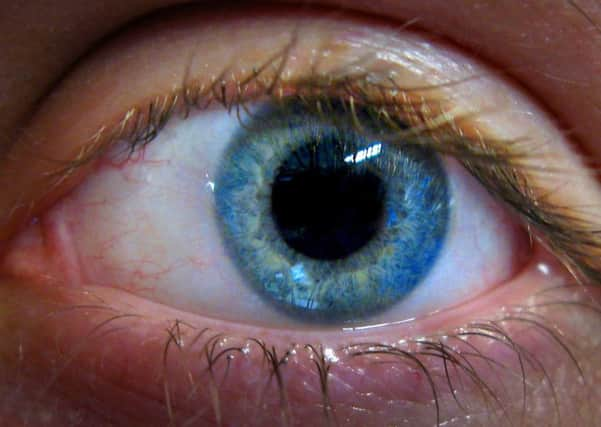Stem cell operation a ‘major milestone’ for age-related macular degeneration


Professor Lyndon Da Cruz from Moorfields Eye Hospital in London carried out the operation last month on a woman with age-related macular degeneration (AMD).
He took a single stem cell from an embryo and grew it into a “patch” of cells, before transplanting it into the eye. There have been no complications to date. Experts hope to be able to reverse vision loss in AMD patients. The condition affects more than 600,000 people in the UK and is the leading cause of blindness in adults, according to the Royal National Institute of Blind People (RNIB).
Advertisement
Hide AdAdvertisement
Hide AdA study on 10 patients with a form of the disease known as wet AMD has now been launched, with the hope of extending the findings to people with the more common dry AMD.
In the new technique, a stem cell from an embryo is grown in the lab to create a single layer of retinal pigment epithelium cells.
These cells form a thin sheet that lines the inside of the eye, under the retina. A healthy layer is critical to normal sight. When these cells are damaged or lost, they are thought to lead to AMD.
Prof Da Cruz said embryos were the “perfect source” of cells, adding: “The reason we are very excited is that we have been able to create these very specific cells and we have been able to transfer them to the patient.
Advertisement
Hide AdAdvertisement
Hide Ad“It’s the combination of being able to create the cells that are missing and demonstrate that we can safely transplant them.
“This has the potential to be a treatment rather than being theoretical proof.”
A previous study used stem cells in a solution but was not aimed at reversing sight loss or producing a therapy. This is the first time experts have used a “patch” technique using embryonic cells with the aim of reversing vision loss in patients. The trial began with patients with wet AMD because there is potential to restore their sight faster following sudden vision loss.
The operation is a major milestone in the London Project to Cure Blindness- partnership between Moorfields, the University College London Institute of Ophthalmology and the National Institute for Health Research.
Advertisement
Hide AdAdvertisement
Hide AdProfessor Pete Coffey, from the Institute of Ophthalmology, said: “We are tremendously pleased to have reached this stage in the research for a new therapeutic approach. Although we recognise this clinical trial focuses on a small group of AMD patients who have experienced sudden severe visual loss, we hope that many patients may benefit in the future.”
Anthony Hollander, professor of stem cell biology at the University of Liverpool, said: “Until now the potential of stem cell therapy has been tested almost entirely using adult stem cells. The safety and efficacy of embryonic stem cells remains unknown and will only be understood through clinical trials such as this one.
“Therefore the start of a trial using cells derived from embryonic stem cells for wet AMD is an important landmark and in time will help to establish the true potential of this type of therapy.”
Timothy Dabbs, a consultant ophthalmologist at Leeds Teaching Hospitals NHS Trust and a lecturer at the University of Leeds said the treatment was “a leap into the unknown”.
Advertisement
Hide AdAdvertisement
Hide Ad“Introducing stem cells into the eye has been around for some time, but it highly experimental,” he said. “It’s great that someone has done it safely, what we don’t know is what will happen to these cells in the future.”
Shafiq Rehman, lead clinician for the macular degeneration service at Calderdale Royal Hospital and a lecturer at the University of Bradford, said: “Embryonic stem cell treatment is something that is a promising avenue for us to explore, but much greater research is required before treatments like this would be safely able to enter into mainstream clinical practice.
“I suspect a time frame of around five years is not unreasonable from initial studies to more widespread adoption if the treatment was proven to be safe and effective.”
What is age-related macular degeneration?
Age-related macular degeneration (AMD) is a painless eye condition that causes the loss of central vision, usually in both eyes.
Advertisement
Hide AdAdvertisement
Hide AdReading becomes difficult, colours appear less vibrant and people’s faces are difficult to recognise.
With dry AMD (which affects around 90 per cent of people with AMD), sight loss usually happens gradually over time. Sometimes it can be rapid, as with wet AMD.
Dry AMD develops when the cells of the macula become damaged by a build-up of deposits. Wet AMD occurs when abnormal blood vessels form underneath the macula and damage the cells.
There’s currently no cure for either type of AMD.